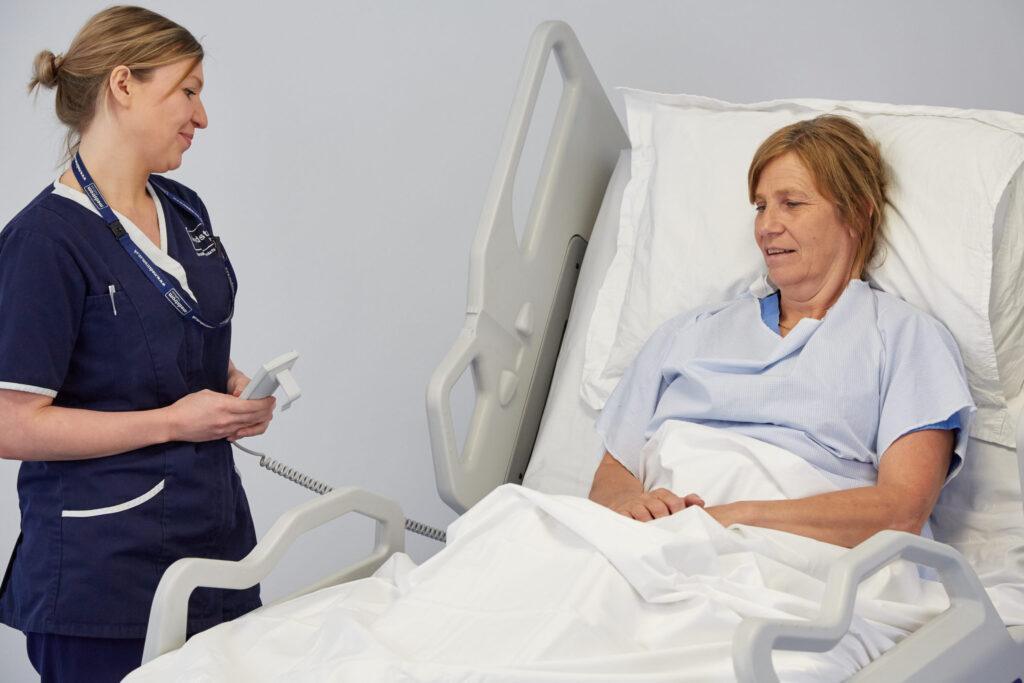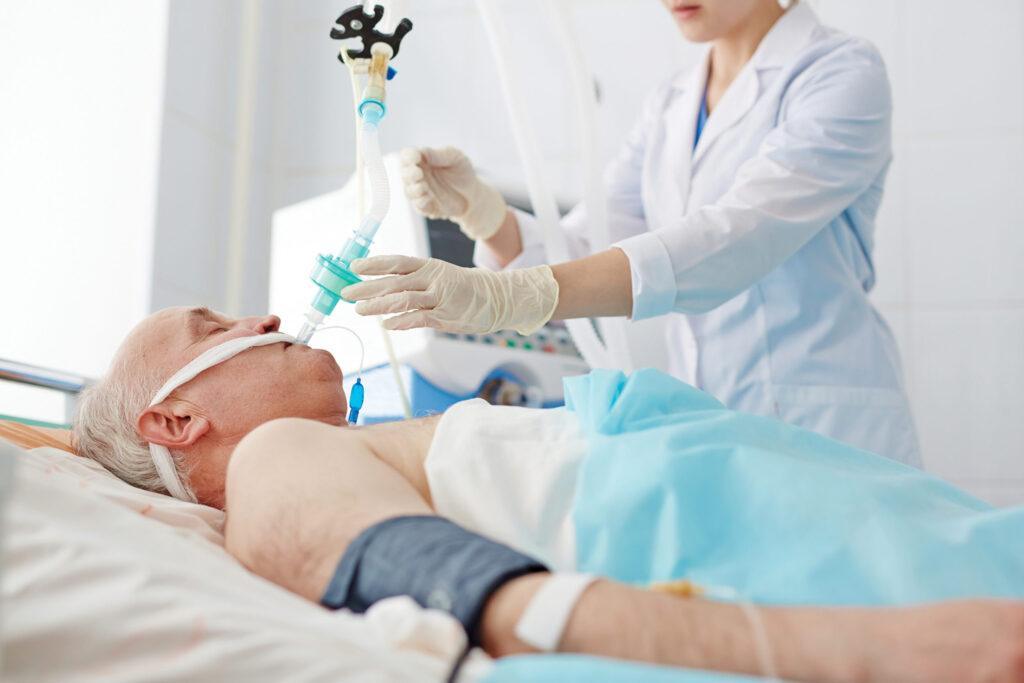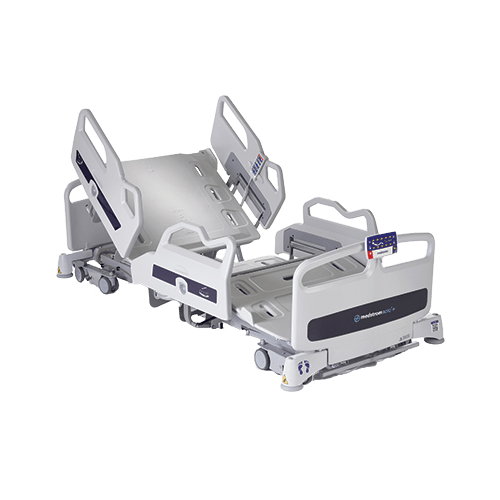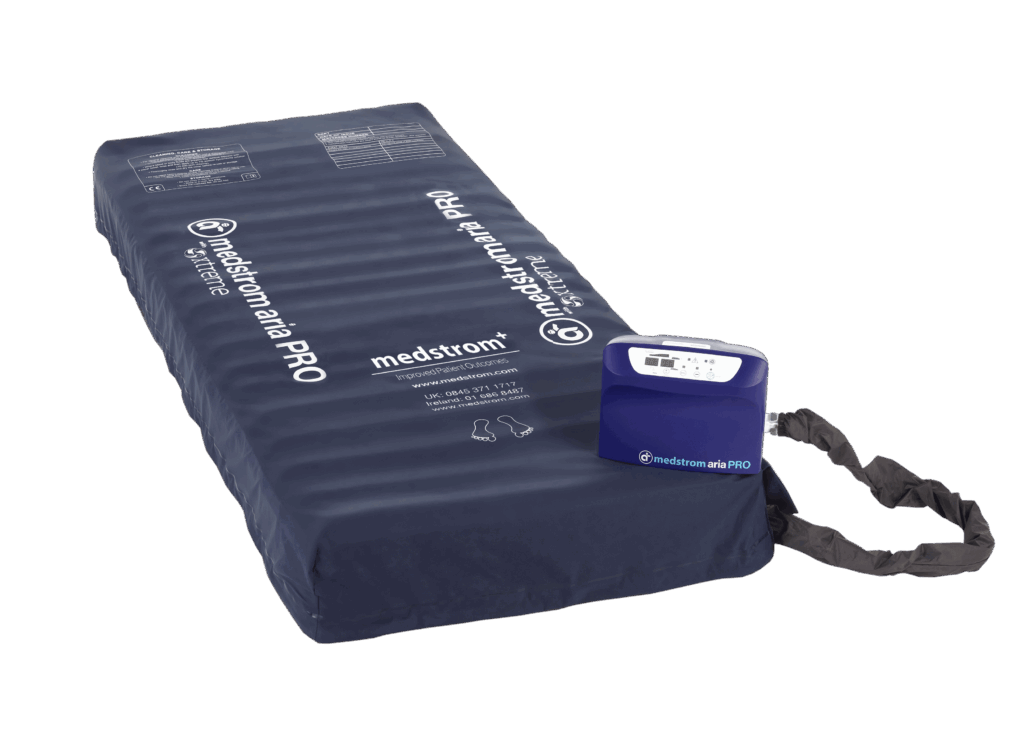Can the Early Adoption of Surface Technologies Help with Pressure Ulcer Prevention?
Proactive use of therapeutic support surfaces can make the difference between pressure ulcer prevention or treatment. Watch the recordings below from Tissue Viability and wound care experts, who offered clinical insight and real-life patient examples to show how early adoption of surface technologies prevented harm rather than waiting for damage to occur and addressing it reactively.
1. Using Fluid Immersion Simulation Therapy for a Highly Complex Patient
“By managing his pain using a surface, we were able to meet many other goals. My only regret is that we could have thought about it sooner and made him more comfortable sooner.”
Within Deborah’s session she detailed a recent, real-life example of a highly complex patient that she and her team had managed. She addresses the numerous challenges encountered with this patient, not only in terms of pressure ulcer prevention and treatment of existing wounds, but also pain management.
This impacted the care delivery from Deborah and her team, leading to the proactive use of a suitable therapy for this patient to support both clinical outcomes and quality of life. Hear her powerful story about the outcomes of using fluid immersion simulation therapy and the changes in practice that this experience has helped to influence.
Deborah’s patient case study was also recognised and presented as an e-poster at the Wounds UK Conference 2022.
2. The Considerations for Selection Fluid Immersion Simulation Therapy
“We know the negative impact of pressure ulcers on patient’s quality of life, including things like anxiety.”
The importance of making sure the right patient is on the right surface at the right time is a key consideration and one which Lorraine addresses head-on in this thought-provoking presentation.
Lorraine emphasises the importance of using clinical judgement and understanding the benefits of different therapeutic support surfaces to make a holistic assessment for the patient. She explores her own use of fluid immersion simulation therapy and how her team determine its suitability for different patients. This extends to examples of pressure ulcer prevention for patients suffering from necrotising fasciitis, among other complications.
3. How to Write an NHS Business Case for Proactive Use of a Therapeutic Support Surface.
“Pressure ulcer prevention is a 24 hour consideration. You want a high specification seating provision as well as a mattress – they go hand in hand when you’re looking at skin integrity.”
In Julie’s session, she gave excellent first-hand advise on how to state a case for proactive use of a therapy surface using an NHS Business Case approach. Julie remarked on her own submission back in 2015 for using fluid immersion simulation therapy within Liverpool Heart and Chest NHS Foundation Trust and some of the most successful tips for submission.
Sharing extracts from that submission, Julie covered how she had approached key stakeholders and influencers in the Trust with necessary evidence, including a healthcare economic argument devised from the Department of Health’s Pressure Ulcer Productivity Calculator.
Hear how Julie has since been gathering evidence on the clinical and financial benefits this successful business case has yielded. In particular, she addresses how the addition of a mattress selection protocol supported appropriate patient usage.
Q&A Session
To close, each of our speakers joined our hosts to help answer audience questions. Jump to the most relevant question for you from our selection below:
- Within your clinical practice, how have you helped promote early adoption of therapeutic support surfaces?
- Can you advise on how to support prevention of both skin damage and deconditioning of the patient without compromise?
- As a Social Worker not carrying out personal care, what are the tell-tale signs of a person suffering from skin breakdown?
- What is the best practice to keep comatose patients’ skin intact when they are attached to mechanical ventilation and there is no help to rotate patients?
- Trolley waits at A&E are common. What advice can you give to help prevent skin friction and pressure?
- Are Fluid Immersion Simulation Therapy mattresses available for patients in the Community?
- How did you discover this mattress system and how did you overcome challenges to ensure funding was provided?
Download Our Pressure Ulcer Guide
Learn More About Pressure Ulcers Here







